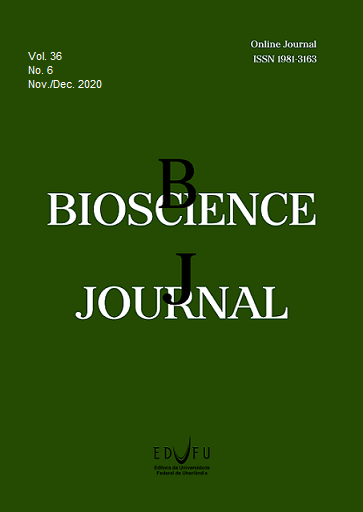Physiological changes in Solanum lycopersicum L. in the presence of root-knot nematodes and salicylic acid
DOI:
https://doi.org/10.14393/BJ-v36n6a2020-48174Keywords:
Meloidogyne javanica., Tomato plant., Gas exchange, Chlorophyll.Abstract
Nematodes of the genus Meloidogyne spp. are one of the tomato culture’s main pathogens. According to their soil infestation level, physiological changes may occur. Consequently, it is extremely important to employ given products to minimize their effect. A feasible option is the salicylic acid, a phytohormone that can induce into resistance due to its ability to increase the production level of some pathogenicity proteins. Therefore, the purpose hereof was to assess the effect of salicylic acid on the physiology of tomato plants subject to different populational densities of Meloidogyne javanica. The design employed was one of randomized blocks, in an incomplete factorial scheme, using the Box Central Compound (BCC) matrix with five nematode populational densities (PD) (0; 5815; 20000; 34184; and 40000 eggs per plant) and five salicylic acid doses (0.0; 0.29; 1.0; 1.71; and 2.0 mM), with four repetitions and two plants per experimental patch. The gas exchanges, fluorescence, and chlorophyll levels were evaluated 45 days after the transplant and soil infestation. The data were submitted for analysis of variance through the F test and, in the significance cases, the polynomial regression analysis was performed. For stomatal conductance, a greater reduction was seen at the PD of 21755 eggs per plant, a fact that might have decreased the liquid assimilation of CO2 and the efficiency of carboxylation. The salicylic acid (SA) affected the CO2 liquid assimilation and the efficiency of carboxylation. The infestation of M. javanica in tomato plants negatively affected the gas exchange and the chlorophyll levels because the SA application did not mitigate the negative effect thereof.






